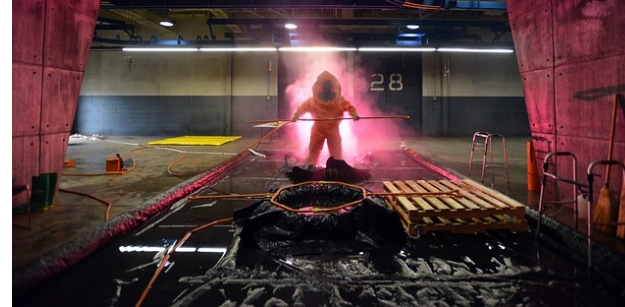Decontamination is a distinct cleaning technique that includes several tools, equipment, chemicals, and expertise for complete neatness, and it is mostly used in medical environments, including dentistry, surgery, and veterinary science.
These methods help in preventing germs, bacteria, and other noxious contaminants from causing chronic diseases that can be hazardous to the health of humans and animals or cause environmental damage.

Although there are numerous methods used in the process of decontamination, here are some significantly effective ones that you may employ for best results:
1. Physical Cleaning
It is a process of removing impurities such as microorganisms. If soiling may be present, this is a necessary step before effectively enabling the disinfection or sterilization function. However, the surface may look cleaner; physical cleaning does not destroy all the micro-organisms. The cleaning of work surfaces and equipment can be best done with detergent and warm water. It is also essential to ensure that the cleaning products which are used do not damage work surfaces and equipment.
2. Water Purification
Water purification is a significant procedure for removing harmful compounds, biological contaminants, suspensions and other contaminants from water. This is to ensure that the water is adapted to certain functions. Most water if disinfested and purified for human consumption, however, water purification can be carried out for several other purposes such as pharmacological purposes, medical purposes, industrial, and chemical applications.
The methods used for water purification include physical processes like distillation, sedimentation, and filtration; chemical processes like chlorination and flocculation; biological processes like biologically active carbon and slow sand filters.
To determine whether the quality of water is appropriate or not, visual inspection is not enough. Simple cooking processes or the use of family activated carbon filters are not enough to deal with all possible contaminants in the water.
3. Ultrasonic Cleaning
Ultrasonic cleaning is a liquid-based cleaning method that is recommended for specific equipment and is positively dependent on cavitation (rapid bubble formation and collapse). This method is consistently used in hospitals, laboratories, beauty, and body art sectors, but is most suitable for cleaning contaminated, reusable items, and the items to be treated should be submersible.
The items to be treated should be submersible, and ultrasonication is carried out in lidded tanks and can even clean recesses and apertures. Ultrasonic cleaners should be routinely cleaned twice a day and must be kept clean and dry overnight.
4. Disinfection
The most commonly used method of decontamination; disinfection is the process of applying antimicrobial agents to the surface of non-living items to destroy pathogenic micro-organisms that are living on them. Presently, disinfection methods are increasingly used in areas around living beings like humans and animals. This cleaning method brings down the percentage of micro-organisms quickly and prevents the possibilities of infections. There are several special detergents, drugs, and chemicals that can be used for effective disinfection.
5. Antisepsis
Antisepsis is mainly an antimicrobial substance that is applied to skin or tissues for removing micro-organisms, sepsis, putrefaction, and infections. These substances are generally distinct from antibiotics because of its ability to safely destroy bacteria inside the body.
Few antiseptics are true germicides that can destroy microbes compared to other bacteriostatic that only prevents its growth.
6. Sterilization
Sterilization is a notable and unique method of decontamination. It is the process of eliminating, removing, killing, or deactivating every form of life (referring to micro-organisms like bacteria, fungi, spores, viruses, etc) and other biological agents such as prions present in particular object, surface, or fluid.
Effective sterilization can be executed through several means, including heat, irradiation, chemicals, filtration, and high pressure. This decontamination process is different from disinfection, pasteurization, and sanitization, as these methods only reduce rather than eliminating all forms of life and biological agents that are present.
Conclusion
As discussed, decontamination is the process of neutralizing and removing contaminants accumulated on personnel or equipment, and it is critical to safety and health. Depending upon the contamination, measures need to be taken to secure the place from infections and health hazards.
Although methods of decontamination can be classified into various categories depending upon on technique, tools, equipment, and other aspects, you can still have the comfort of professional decontamination services present around the world that are operating for making things easier for you. There are some renowned professional services available, and it is wise to research and analyze every decontamination service in Singapore before hiring one. Their expertise in treating and eliminating contaminants will help in performing the task of decontamination efficiently.